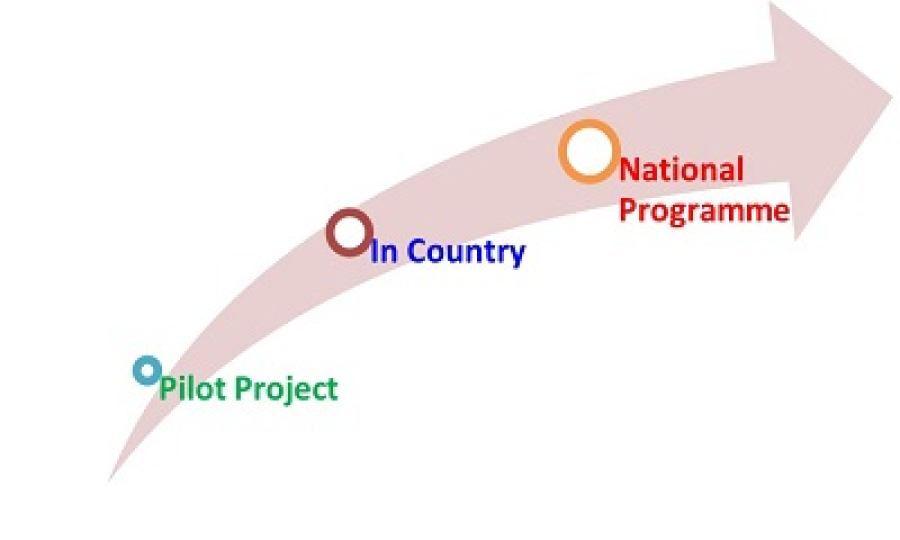Brief History of CEMASTEA
The Centre for Mathematics, Science, and Technology Education in Africa (CEMASTEA) was established in 2004 as a public institution under the Ministry of Education. The Centre traces its history to the Strengthening the Mathematics and Science in Secondary Education (SMASSE) Project implemented jointly by the Government of Kenya through the Ministry of Education and Japan through the Japan International Cooperation Agency (JICA). The project targeted improving classroom practices for mathematics and science teachers to upgrade young Kenyans' mathematics and science capabilities. The SMASSE project was housed at the Kenya Science Teachers College (KSTC) from 1998 to 2003, when its operations were moved to the current location at CEMASTEA in Karen. In 2005, Sessional Paper No. 1: Policy Framework on Education and Training recognized the role of CEMASTEA as a fully-fledged institution for In-Service Education and Training (INSET) for mathematics, science, and technology teachers. CEMASTEA activities were captured in the Kenya Education Sector Support Program (KESSP 2005-2010) Investment Program No.17.
When technical cooperation with JICA ended in 2013, the Government of Kenya continued to fund the implementation of CEMASTEAs programs. Over a period of time, the expansion of CEMASTEA programs necessitated its own space. This necessitated the conversion of the Centre for Research and Technology (CRT) to the Centre for Mathematics, Science, and Technology Education in Africa (CEMASTEA) in Karen. Japan International Cooperation Agency (JICA) funded the upgrading of CEMASTEA facilities to a modern science complex. His Excellency President Uhuru Kenyatta officially opened the facility in February 2014. Over time, CEMASTEA has developed exceptional competences in planning, coordinating, and implementing Continuous Teacher Professional Development (CTPD) programs. The Centre continues to expand its programmes. It has brought on board Early Childhood Development Education (ECDE) teachers, Junior School (JS) teachers, teacher training colleges, principals, deputy principals, and other education stakeholders in accessing its programmes. In 2022, CEMASTEA was transformed into a State Corporation under the Ministry of Education (MoE) with the mandate of Training and Research. CEMASTEA is set to unveil its fifth generation strategic Plan that envisions leveraging the rich history to steer it to the next level of growth.
The Magic of ASEI-PDSI 
The celebration of the silver jubilee would not be complete without mentioning Activities Student-centred Experiment Improvisation (ASEII) and PDSI, P stands for Plan, D for Do, S for See and I for Improve. CEMASTEA has used ASEI-PDSI as a ‘rallying call’ for a paradigm shift in classroom practice from the then predominant teacher centred ‘talk and chalk’ lessons to a more learner-centred ‘activity filled’ and innovative classroom practices that connect to real-world, real-life scenarios and applications that enable learners to see the practical implications of their learning. ASEI-PDSI is a concept that has defined and continues to headline all CEMASTEA’s Teacher Professional Development (TPD) programmes. CEMASTEA's goal has always been to promote successful classroom practices that emphasize inquiry-based and hands-on learning, the development of critical thinking and problem-solving skills, learner engagement, innovation, and creativity. The ultimate goal is to prepare students for the 21st century by providing cutting-edge STEM lessons and learner experiences.
ASEI-PDSI is a comprehensive approach to teacher development that focuses on skills and methods for planning and delivering a 'good lesson'. Good lessons involve active engagement from students through a range of activities such as practice and drill, problem solving in mathematics, experiments and investigations in science, and application of what they have learned. They emphasize scientific and mathematical process abilities including measurement, observation, recording, and inference. Good lessons also encourage critical thinking and problem resolution by asking thought-provoking questions, exercises, or scenarios. They also develop communication and teamwork skills as students react to questions, participate in conversations, and deliver individual and group presentations.
CEMASTEA has provided teachers with creative and hands-on training to improve their subject knowledge, instructional strategies and approaches and classroom management abilities. This, in turn, has had a significant impact on increasing student engagement, improving learning outcomes, and cultivating an outstanding culture. Beyond the classroom, ASEI-PDSI has established and nurtured a community of enthusiastic and devoted practitioners, as well as a network of change-makers who are pushing classroom innovation and influencing the future of education in Kenya and across the continent. Indeed, the implementation of ASEI-PDSI has left an indelible impression on the STEM environment. It is therefore appropriate to declare 'Happy Silver Jubilee, ASEI PDSI' and look forward to many more years of empowering educators and changing STEM education.
Latest from Esther Nyambura
- CEMASTEA Hosts Successful INSET Centre Principals’ Workshop
- CEMASTEA Conducts Successful Holistic Learning Training for Rwandan Teachers
- Empowering Quality Standards and Assurance Officers (QASOs) for Enhanced STEM Education
- Science and Mathematics Teachers Pilot Symposium: Innovative Classroom Practices
- CEMASTEA Strategic Plan 2023 – 2027: Key Highlights

